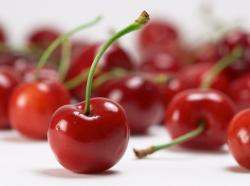Cherries Are A Celebrated American Fruit
February 22, 2011 | 2 min to read

Native to eastern Europe and western Asia, the common cherry tree is part of the Rose family along with peaches, plums, apricots, and almonds. Prunus avium is botanic Latin for Wild Cherry and means "of or for the birds," obviously named because of the favor that birds show for the succulent fruit.
The cherry is one of the world's oldest cultivated fruits. Named after the ancient Turkish town of Cerasus, cherries date back to 300 BC when they were described by the Greek botanist Theophrastus. The cherry tree was a favorite of the Egyptians, Greeks, and Romans. Around 70 AD Pliny wrote that the cherry tree was present in Italy, Germany, England, and France. Roman General Lucullus is said to have committed suicide when he believed he was running out of cherries.
Cherries were brought to America by early settlers in the 1600s. The French brought their favorite variety and planted cherry pits along the Saint Lawrence River and down into the Great Lakes area, and French settlers enjoyed cherry trees as part of the gardens in Detroit, Vincennes, and other midwestern colonies. Eventually the new species brought by Europeans were cross-bred with a species of cherry already in America.
During the mid-nineteenth century, a Presbyterian missionary named Peter Dougherty planted the first cherry orchard in northern Michigan, and it flourished. Upon seeing its success, other farmers in the area planted their own orchards. It was in 1893 that the first commercial tart cherry orchards were planted in Michigan, near the site of Dougherty's first plantings; and a few years later, the tart cherry industry was firmly established, soon surpassing the success of other crops. The first cherry-processing facility, the Traverse City Canning Company, was built just south of Traverse City, Michigan
To read the rest of the story, please go to: The Examiner (Denver, CO).
